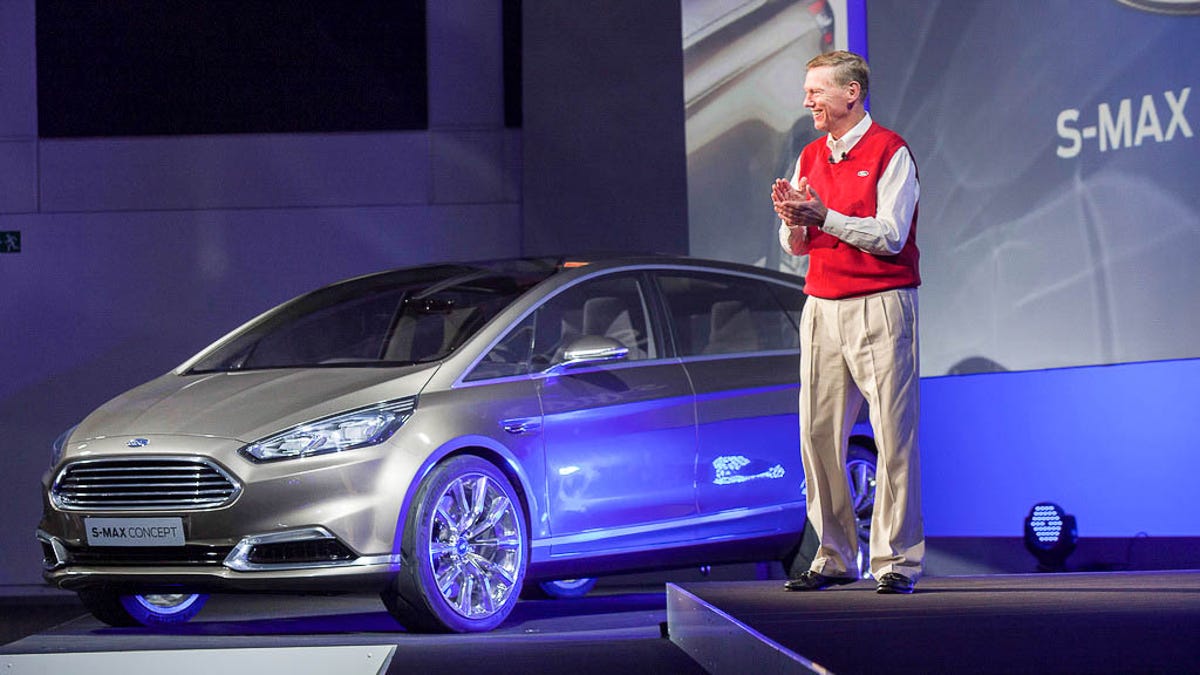Ford brainier concept a step toward self-driving cars
At the IFA show, the company showed a version of its S-Max car with abilities like Wi-Fi based car-to-car communications, radar-based emergency collision detection, and better self-parking skills.

Ford Motor, trying to show off its electronics credentials, on Friday unveiled a new concept vehicle with technologies that Chief Executive Alan Mulally said will eventually lead to self-driving cars.
The concept car, a modified version of the compact S-Max that Ford revealed at the IFA electronics show in Berlin, has a variety of digital-era advancements:
• Vehicle-to-vehicle communications technology, a variation of Wi-Fi networking, that lets cars communicate directly to discover risks like a stopped vehicle around a blind curve.
• A system that uses radar and cameras to watch for pedestrians and apply the brakes if a collision is imminent.
• A parking assist technology that can park the car in either parallel or perpendicular parking spaces -- and then unpark it afterward. The idea should be very popular in super-cramped European parking garages, Mulally said.
• A heart-rate monitor built into the seat that can record health information and, if authorized, share it with a doctor.
Such advancements are leading to the future of connected, self-driving cars produced by the marriage of computing and automotive industries. Mulally agrees with rival carmakers and companies like Google that the self-driving car will arrive, but he refused to forecast exactly when.
"We have no illusions about how difficult that is," Mulally said. "The idea is very compelling longer-term. GPS, camera technology, the computational capacity, the sensors -- it's going to be awhile before we get all the enabling technologies, the infrastructure in place, and make it affordable."
But the concept car illustrates Ford's approach -- indeed, the whole industry's approach -- of gradually moving in the autonomous direction.
"All this technology helps. We can bring the pieces of that into the vehicle every year," he said.
The auto industry is developing two related technologies, vehicle-to-vehicle (V2V) communications and vehicle-to-infrastructure (V2I) communications, that use a variation of Wi-Fi standards called 802.11p. Regulators set aside the 5.9GHz frequency band for it in Europe and the United States, but the US is considering opening up that spectrum for any use.
Also at IFA, Ford announced a small, new SUV for the European market, the EcoSport, and touted its Sync and AppLink electronics technologies.
Sync handles a range of technologies such as hands-free phone calling, voice navigation instructions, emergency calling after a crash, and Internet connectivity that can set up an in-car wireless network based on your phone's Net connection. Sync AppLink lets people control apps on their phones with voice controls, and Ford announced several new app partners, including TomTom for navigation, ADAC for finding parking spots, and Hotels.com for finding hotels.
Ford's approach is to rely on people's smartphones for Internet connectivity so customers don't get stuck with a new data-plan bill or fall behind in the fast-moving world of mobile networking.

